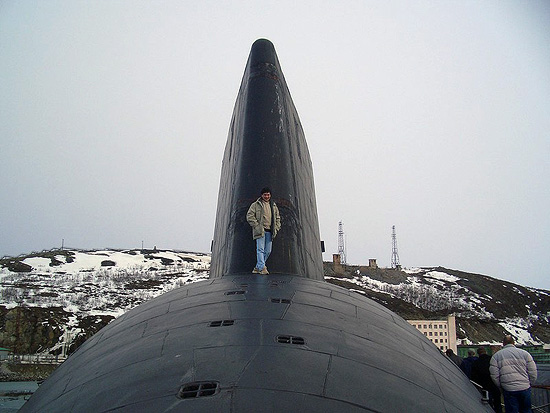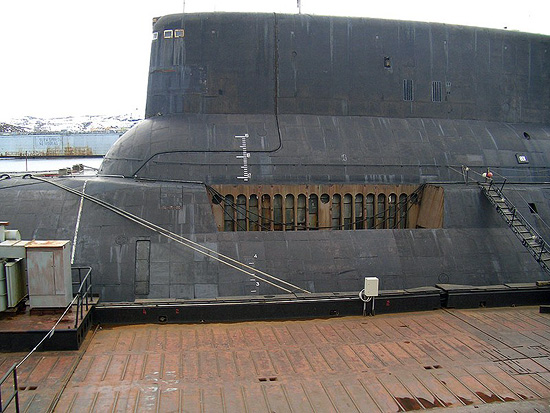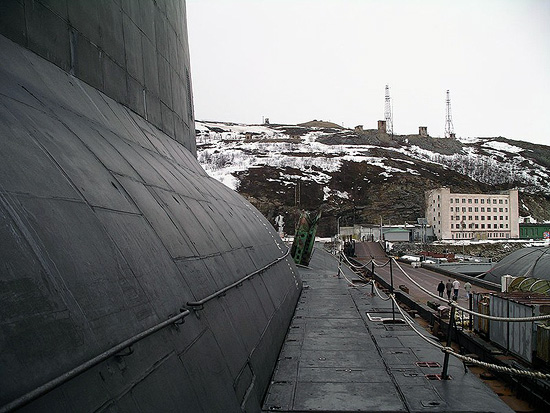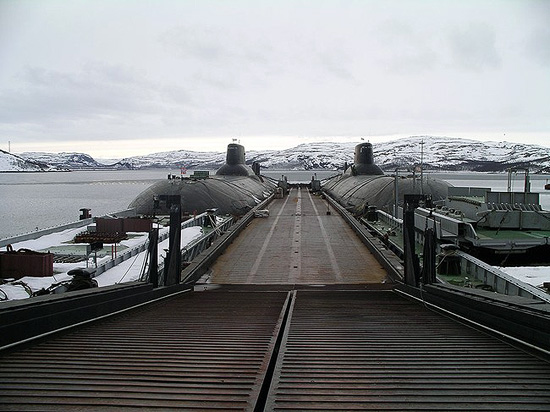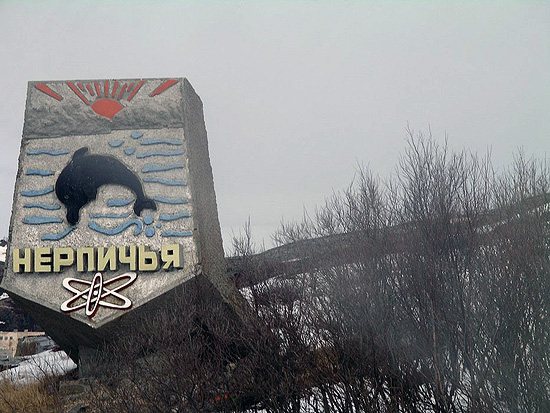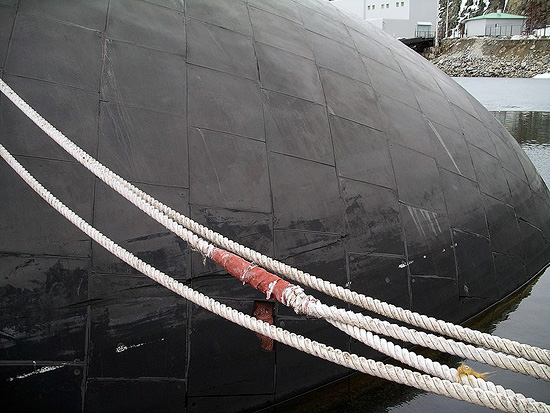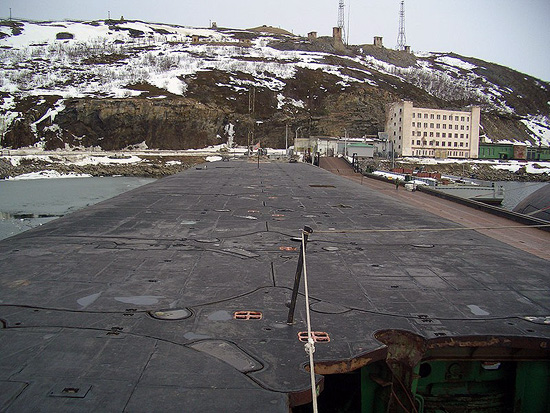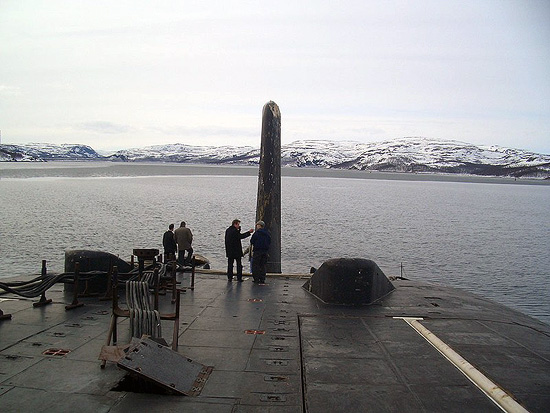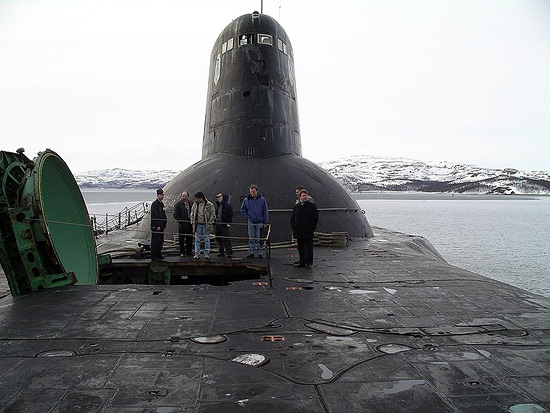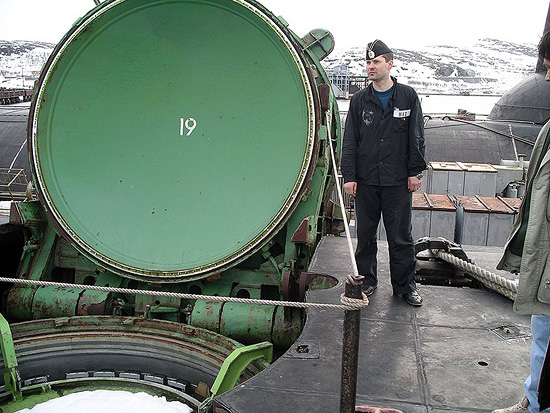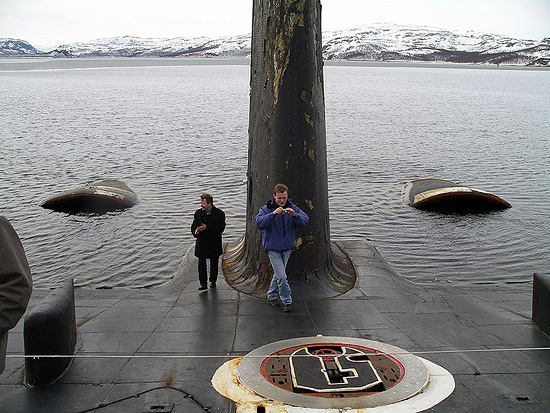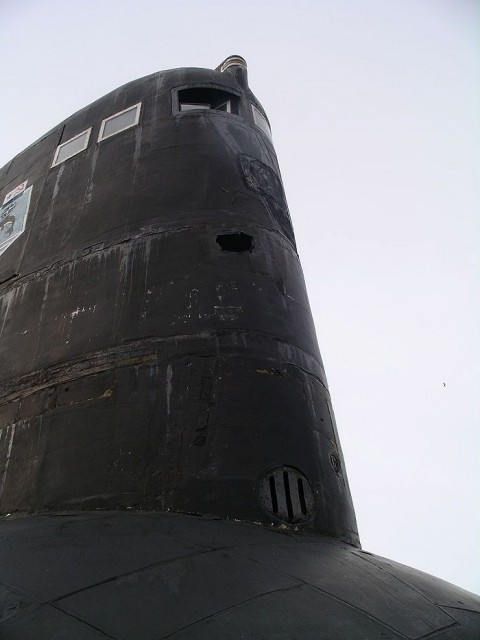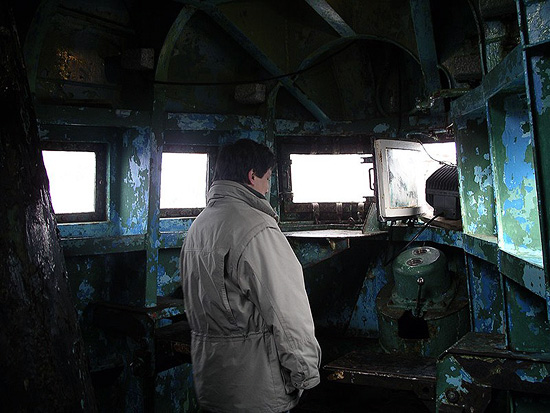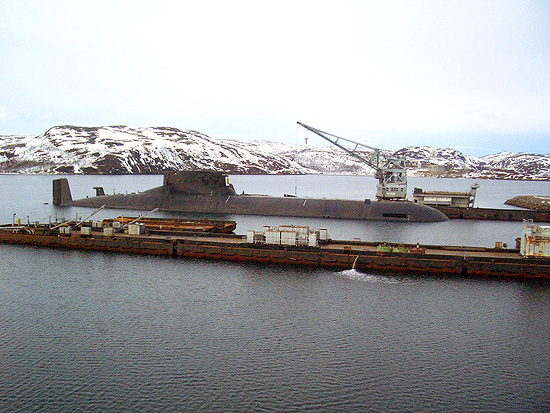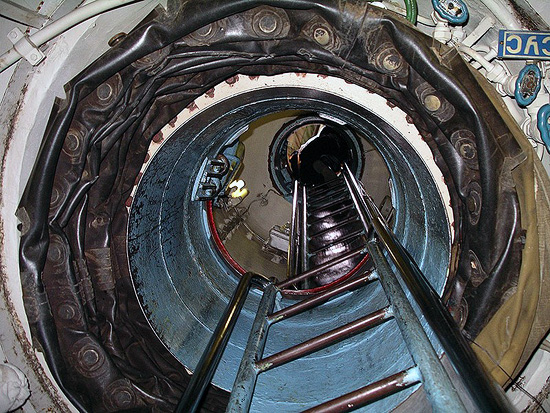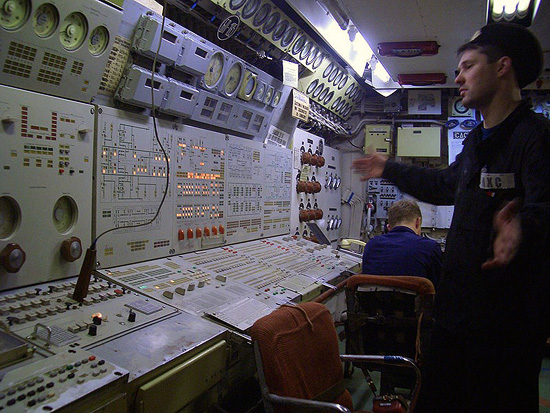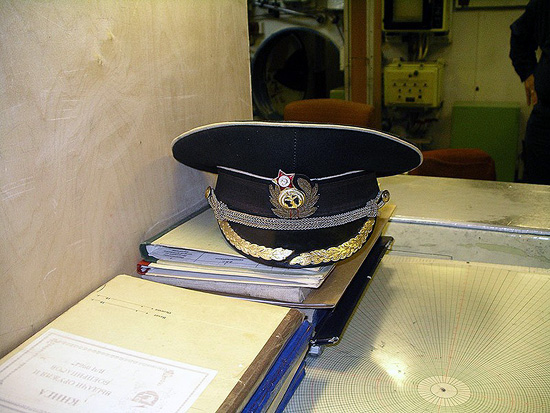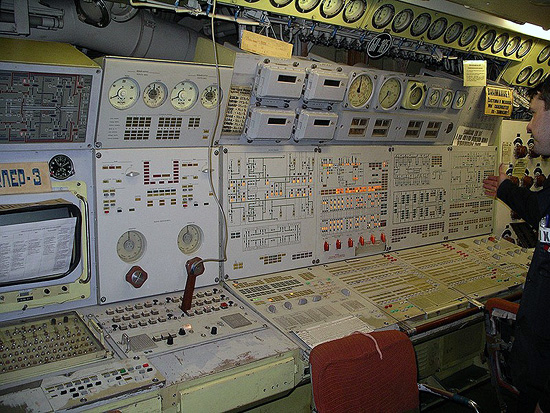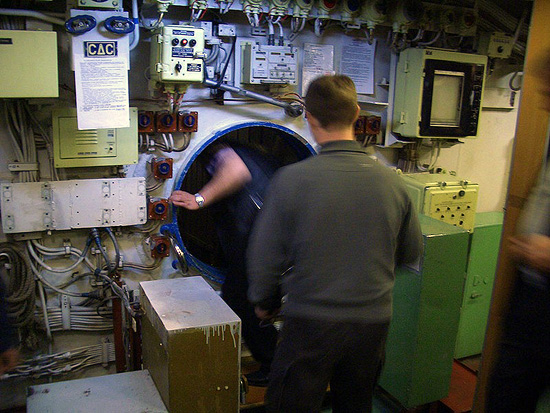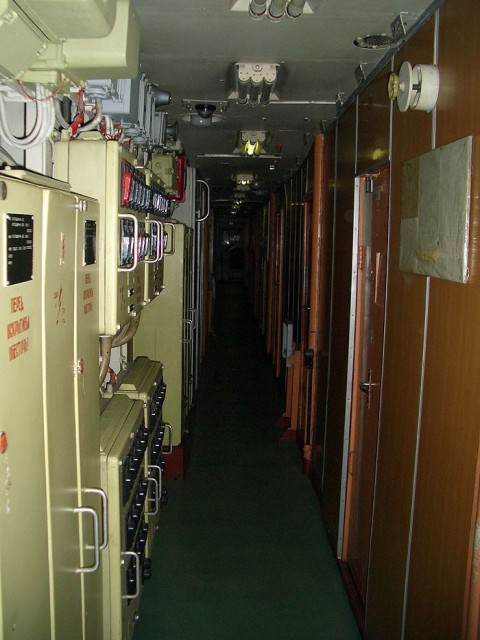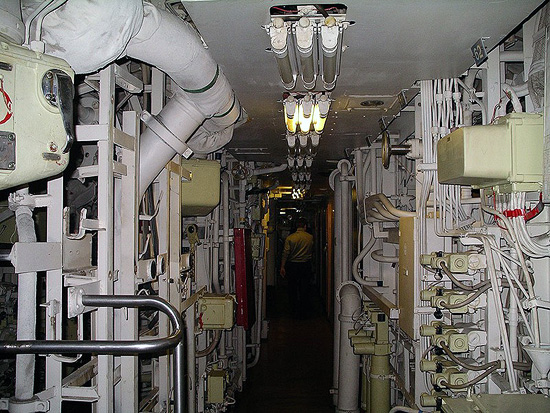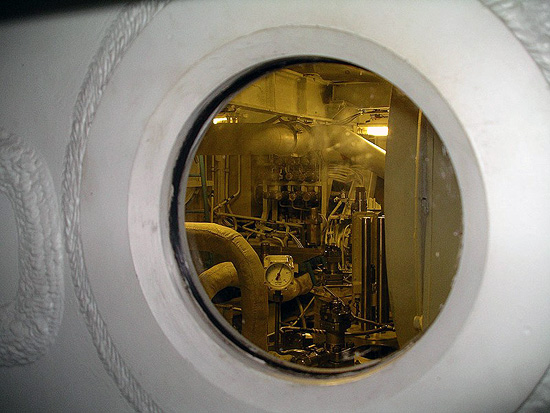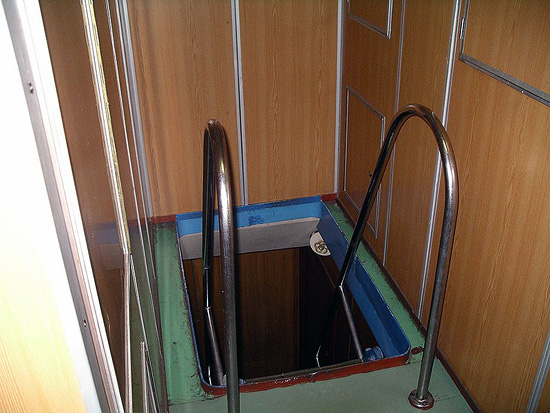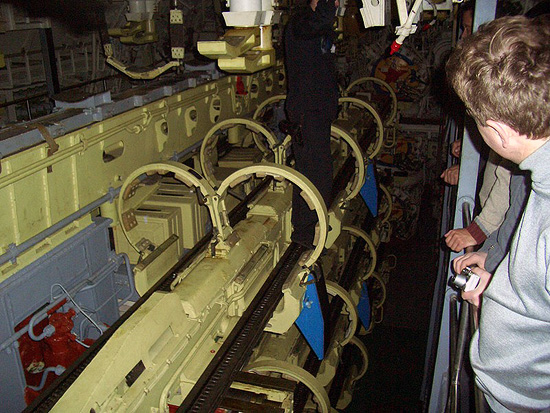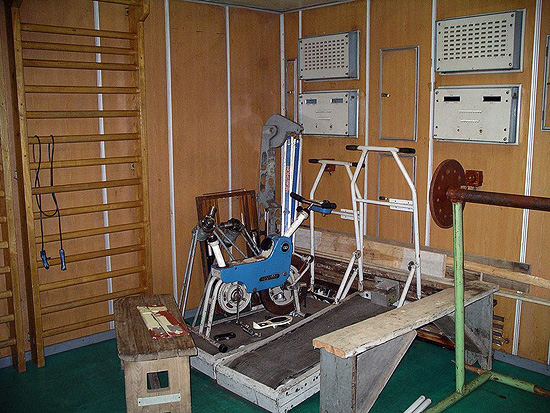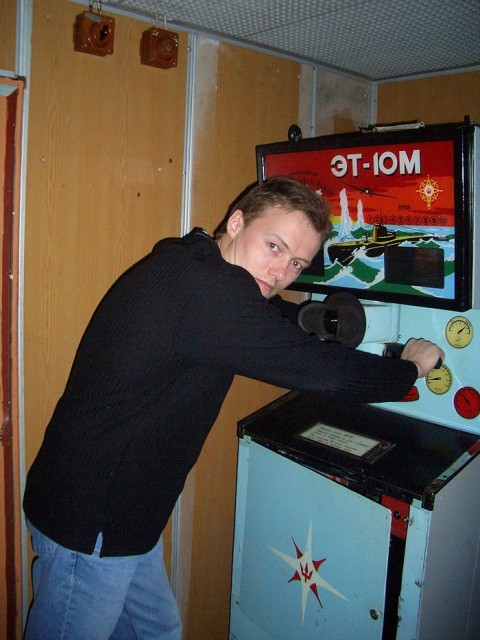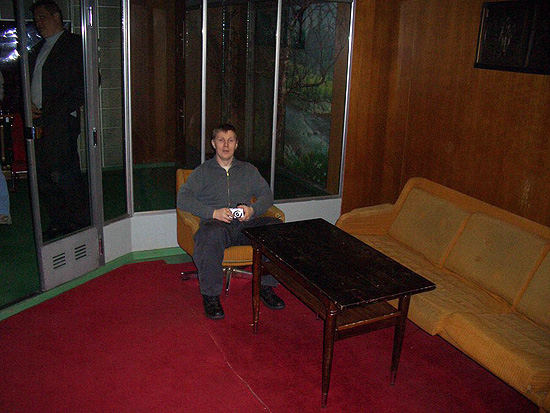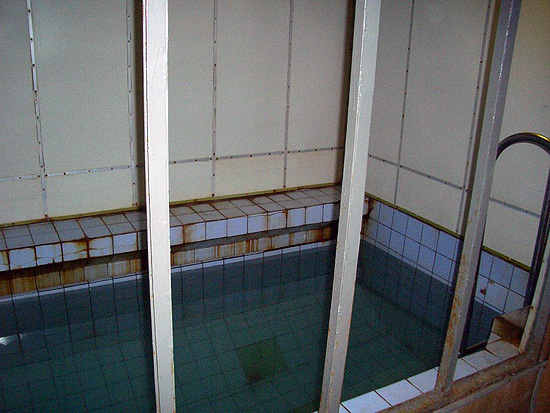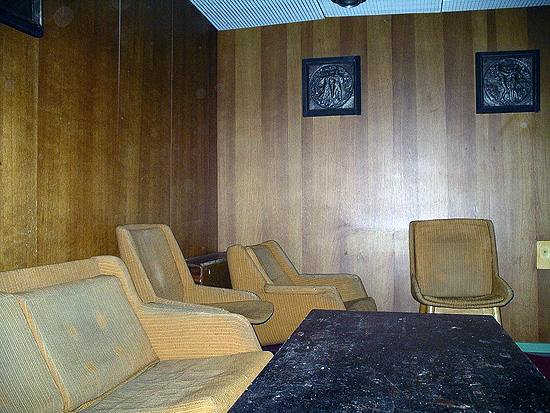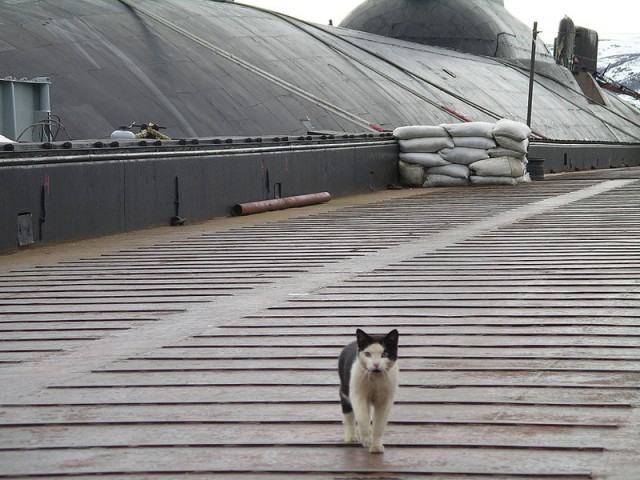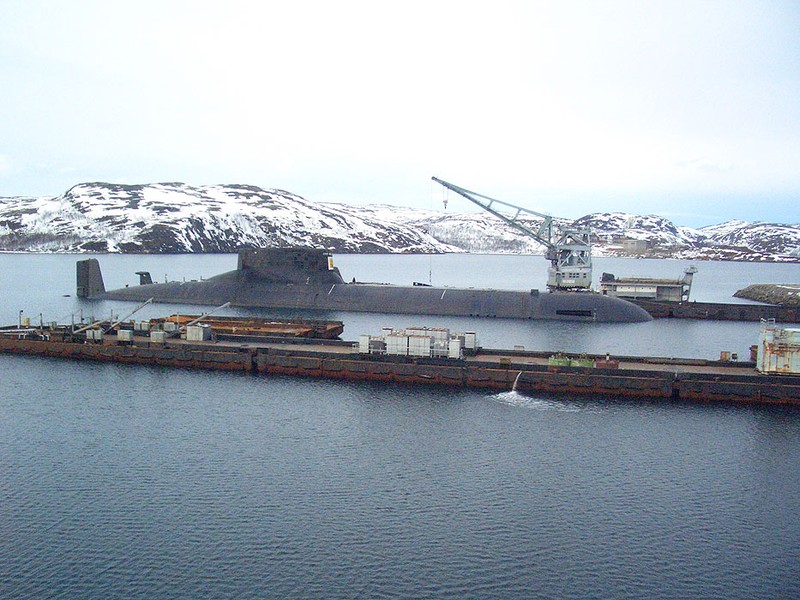
The project was developed with the objective to match the SLBM armament of Ohio-class submarines, capable of carrying 192 nuclear warheads, 100 kt each. However, at the time, state-of-the-art Soviet SLBMs were substantially larger and heavier than their American counterparts (the R-39 is more than two times heavier than the Trident I; it remains the heaviest SLBM in service worldwide). The submarine had to be scaled accordingly
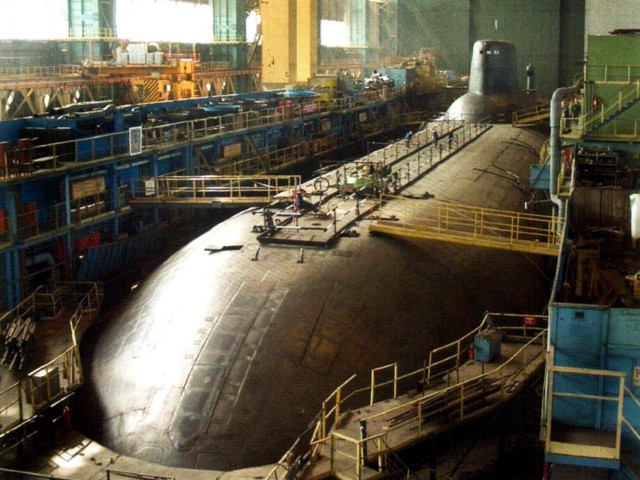
A Typhoon class submarine in dry dock during its construction.
Six Typhoon-class submarines were built. Originally, the submarines were designated by hull numbers only. Names were later assigned to the four vessels retained by the Russian Navy, which were sponsored by either a city or company.
The construction order for an additional vessel (hull number TK-210) was canceled and never completed. Only the first of these submarines to be constructed, the Dmitriy Donskoy, is still in active service with the Russian Navy, serving as a test platform for the Bulava (SS-NX-32) missile. The Arkhangelsk( TK-17) and Severstal (TK-20) remain in reserve, not currently active with the Russian fleet.
All the R-39 missiles have been retired. The Typhoons were slated to be replaced by the Borey class starting in 2010-11.
Besides their missile armament, the Typhoon class features six torpedo tubes; all of which are designed to handle RPK-2 (SS-N-15) missiles or Type 53 torpedoes. A Typhoon-class submarine can stay submerged for periods up to 120 days in normal conditions, and potentially more if deemed necessary (e.g., in the case of a nuclear war). Their primary weapons system is composed of 20 R-39 (NATO: SS-N-20) ballistic missiles (SLBM) with a maximum of 10 MIRV nuclear warheads each. Technically, Typhoons were able to deploy their long-range nuclear missiles while moored at their docks.
Typhoon-class submarines feature multiple pressure hulls, similar to the WW2 Japanese I-404 Sen Toku Class Submarine, that simplify internal design while making the vessel much wider than a normal submarine.
In the main body of the sub, two long pressure hulls lie parallel with a third, smaller pressure hull above them (which protrudes just below the sail), and two other pressure hulls for torpedoes and steering gear. This also greatly increases their survivability – even if one pressure hull is breached, the crew members in the other are safe and there is less potential for flooding.
In late December 2008, a senior Navy official announced that the two Typhoon-class submarines, the TK-17 and TK-20, that are in reserve would not be rearmed with the new Bulava SLBM missile system. They could however be modified to carry cruise missiles or to lay mines, or could be used in special operations. In late June 2009, the Navy Commander-in-Chief, Admiral Vladimir Vysotskiy told reporters that the two submarines would be reserved for possible future repairs and modernization.
In May 2010, the Navy Commander-in-Chief reported that Russia’s Typhoon-class submarines would remain in service with the Navy until 2019. In September 2011, the Russian defense ministry decided to write off all Project 941 Akula nuclear-powered ballistic missile submarines until 2014.
The reason for decommissioning the Typhoon class vessels is the restrictions imposed on Russia by the Strategic Arms Reduction Treaty and successful trials of new Borey-class submarine
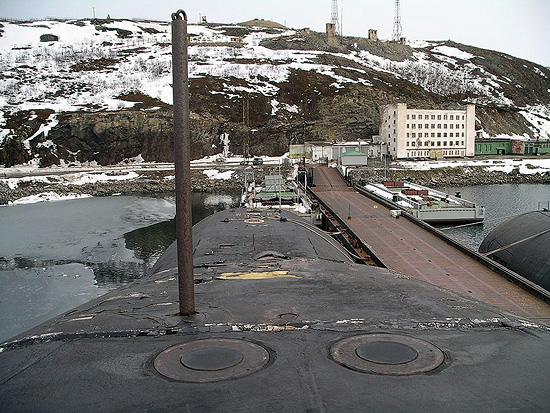
Despite being a replacement for many types of submarines, the Borei class submarines are slightly smaller than the Typhoon class in terms of length (170m as opposed to 175m) and crew (107 people). These changes were in part designed to reduce the cost to build and maintain the submarines.
In addition, the United States and Canada provided 80% of funds for scrapping the older Typhoon class submarines, making it much more economical to build a new submarine. However, according to other sources at the Russian defence ministry, no such decision has been made; in that case, the submarines would remain with the Russian Navy.
Submarines TK-17 Arhangelsk and TK-20 Severstal will not be modernized as platforms for cruise missiles, but they will be kept in service with their previous armament, R-39 missiles.
In 2013, the State-Run RIA Novosti news has announced that the Navy will scrap two Typhoons beginning in 2018. They will be the TK-17 and TK-20
via ru_submarine
